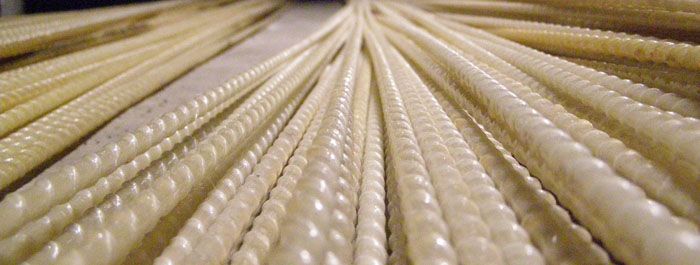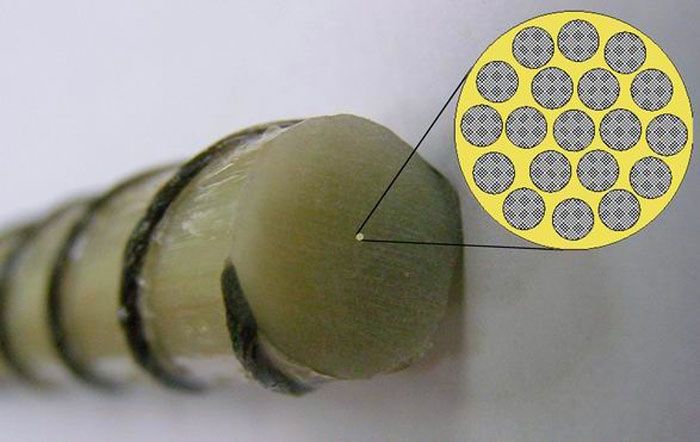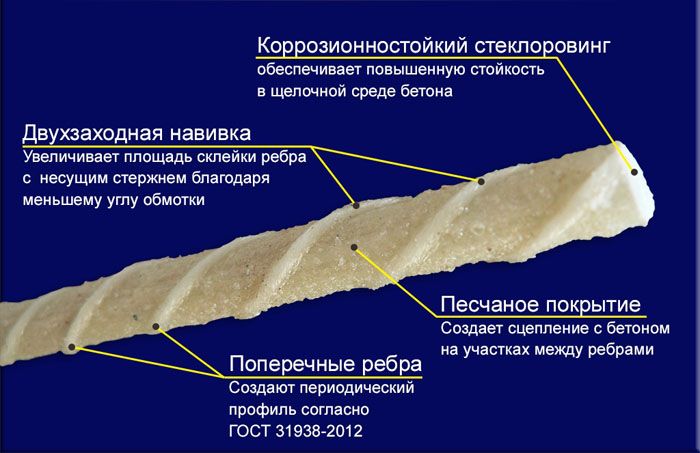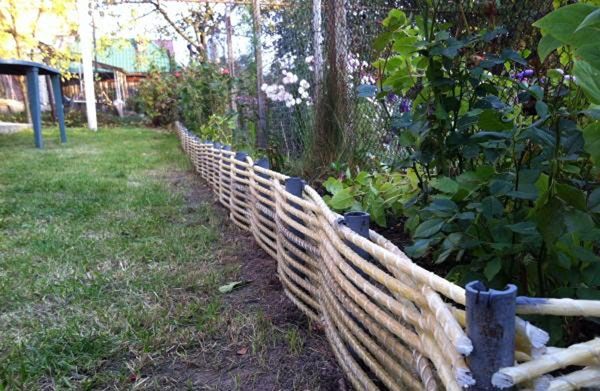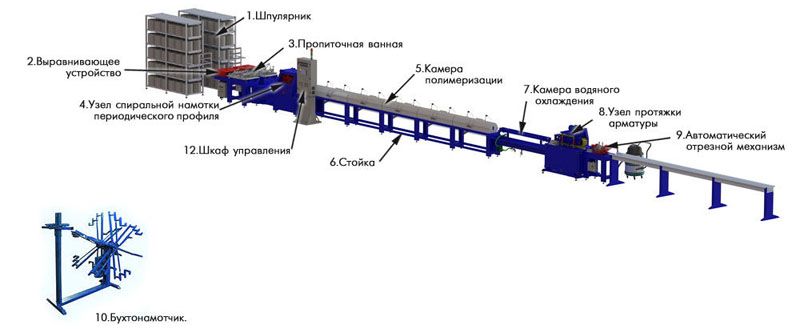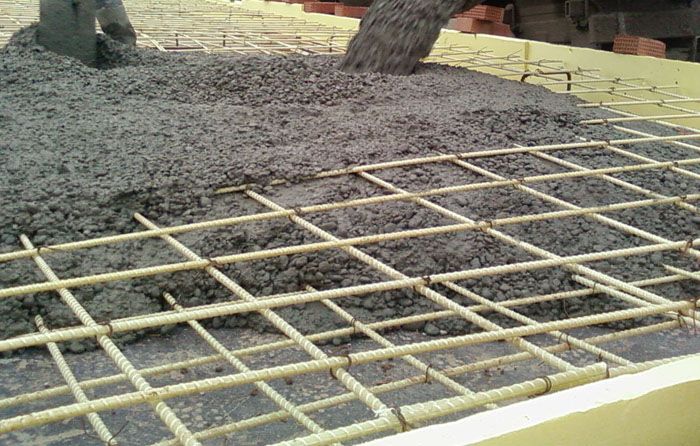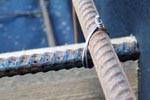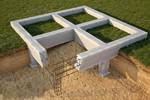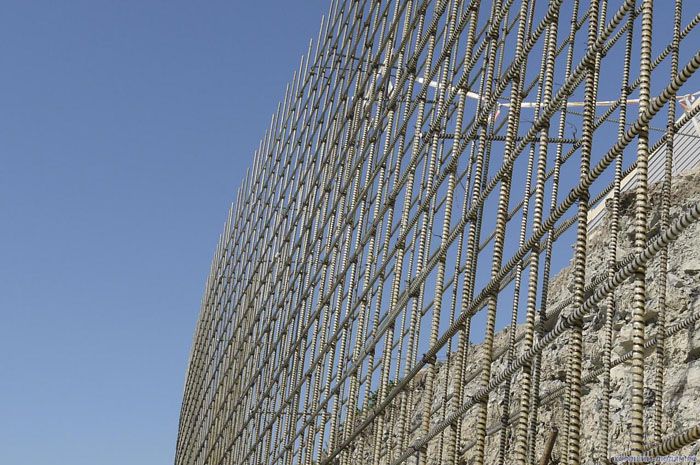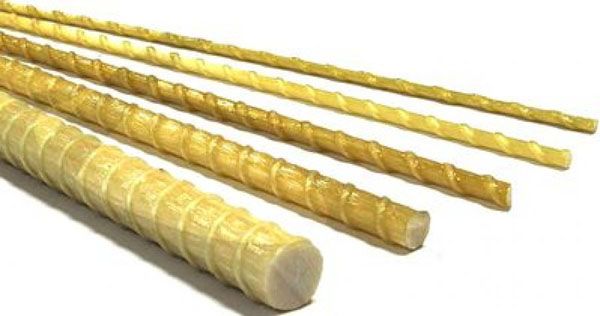Fiberglass reinforcement - how to choose and where to use
The emergence of new technologies in various industries has not spared the construction industry either. New materials have appeared that have made it possible to reduce the time required for construction and installation work and reduce the weight of assembled structures, improve the thermal characteristics of the facilities under construction and their operational characteristics. One of such materials, which has appeared on the construction market of our country in recent years, is fiberglass reinforcement, which will be discussed in this article by the homemaster.techinfus.com/en/ editorial office.
The content of the article [Hide]
- 1 Structure, standard sizes and performance characteristics of composite fiberglass reinforcement
- 2 Fields of application and varieties of fiberglass reinforcement
- 3 Production and requirements for fiberglass reinforcement
- 4 Pros and cons of fiberglass composite rebar
- 5 What to look for when choosing
- 6 Which reinforcement is better: metal or fiberglass
- 7 Leading manufacturers
- 8 Review of prices and user reviews of composite fiberglass rebar
- 9 Video: feedback on the use when pouring the foundation
Structure, standard sizes and performance characteristics of composite fiberglass reinforcement
A building material made of fiberglass fibers impregnated with a polymer binder, formed in the form of rods with ribs of a given size and hardened during the production process is called fiberglass reinforcement (SPA or ASP).
By its structure, the SPA is a bar consisting of two parts, such as:
In addition to the fact that the SPA differs in the type of outer layer, it is classified according to standard sizes accordingly:
The main performance characteristics for this material are the following:
- Diameter - defines the ultimate bending and tensile strength of the product.
- Weight - characterized by the mass of one running meter of the product.
- Coiling step - for SPA with embossed coverage.
Fields of application and varieties of fiberglass reinforcement
Currently, SPA is sold not only in the form of rods and in coils, but is also offered in the form of reinforcing nets and reinforcing cages of various shapes and dimensions.
Due to the variety of offers and successful experience of use, this material is used for various construction and installation works, as well as for the manufacture of various structures.
The main areas of use of fiberglass reinforcement are:
Production and requirements for fiberglass reinforcement
SPA production is a rather complex technological process that requires special equipment and raw materials.The raw material used is aluminoborosilicate glass and an oil-containing polymer binder.
All the main elements of the SPA production line are shown in the following figure:

Pros and cons of fiberglass composite rebar
The reason that after the appearance on the market, the spa became quite in demand, was the positive qualities of this material, which include:
There are also disadvantages, but there are much fewer of them, these are:
Related article:
What to look for when choosing
When the choice fell on the use of fiberglass reinforcement when performing construction and installation work, then when buying it, you should pay attention to such indicators as:
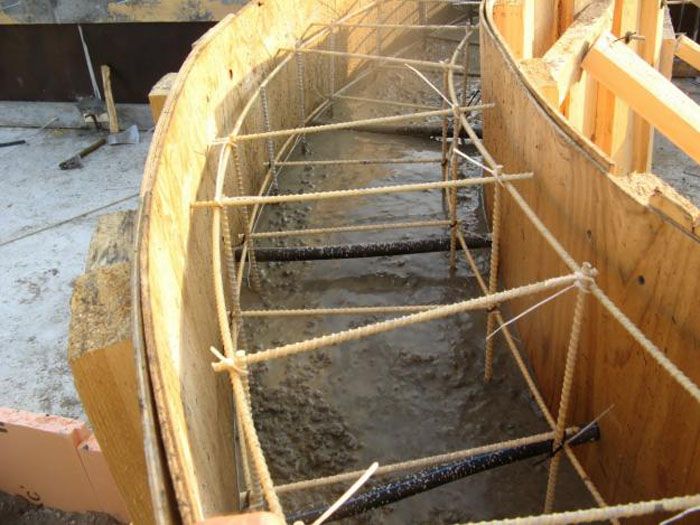
The flexibility of the SPA allows it to be used in the construction of structures of complex geometric shapes without cutting
When choosing a spa, it is best to initially find out the reputation of the company that produces this material, for which you should read reviews on the Internet and in other sources of information.

Related article:
Which reinforcement is better: metal or fiberglass
Which reinforcement to choose - metal or fiberglass - is decided at the stage of development of project documentation, or individually, based on a comparison of the main technical characteristics given in the following table:
| Characteristic | Metal | Fiberglass |
|---|---|---|
| Ultimate strength, MPa | 390 | 1300 |
| Thermal conductivity coefficient, W / m2 × K | 46 | 0,35 |
| Density, kg / m³ | 7850 | 1900 |
| Elasticity | + | + |
| Plastic | + | - |
| Corrosion resistant | - | + |
| Dielectric properties | - | + |
Leading manufacturers
The production of composite fiberglass reinforcement is carried out in many regions of our country. This is especially true for areas with developed industrial infrastructure, such as:
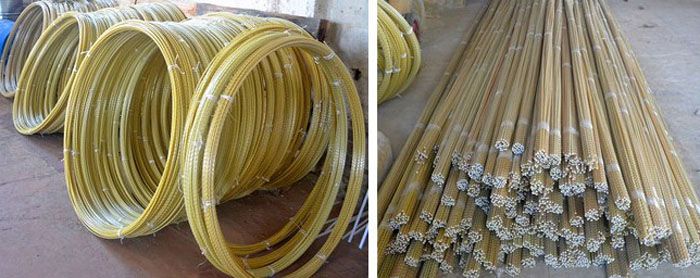
A wide range of SPA allows you to choose not only by technical characteristics, but also by the form of implementation
Review of prices and user reviews of composite fiberglass rebar
The cost of a spa depends on its technical characteristics, place of purchase and the company selling it.
As of the III quarter of 2018, the average cost of fiberglass reinforcement, when sold through dealers of manufacturing companies, is:
| Manufacturer | Brand | Diameter, mm | Outer layer type | Cost (as of September, rubles / p.m. |
|---|---|---|---|---|
| PC "Composite" | ASK | 8,0 | coiled | 11,9 |
| 10,0 | 17,9 | |||
| 12,0 | 26,9 | |||
| ASP | 8,0 | sandy | 13,9 | |
| 10,0 | 23,9 | |||
| 12,0 | 38,9 |
| Manufacturer | Brand | Diameter, mm | Outer layer type | Cost (as of September, rubles / p.m. |
|---|---|---|---|---|
| "ArmatSoyuz" | SPA | 4,0 | coiled | 6,9 |
| 6,0 | 7,9 | |||
| 8,0 | 11,5 | |||
| 10,0 | 17,5 | |||
| 12,0 | 26,9 | |||
| 14,0 | 42,9 | |||
| 16,0 | 60,9 | |||
| 18,0 | 94,9 |
| Manufacturer | Brand | Diameter, mm | Outer layer type | Cost (as of September, rubles / p.m. |
|---|---|---|---|---|
| "Armplast" | ASK | 4,0 | coiled | 5,5 |
| 6,0 | 7,9 | |||
| 8,0 | 11,5 | |||
| 10,0 | 17,9 | |||
| 12,0 | 26,9 | |||
| 14,0 | 42,74 | |||
| 16,0 | 60,52 | |||
| 18,0 | 94,32 | |||
| 20,0 | 117,6 | |||
| 22,0 | 138,99 | |||
| 25,0 | 180,17 | |||
| 28,0 | 223,10 | |||
| 32,0 | 292,74 | |||
| 36,0 | 312,80 |
Individual developers and professional builders leave their feedback on the facts of using the spa.Here is some of them:
Video: feedback on the use when pouring the foundation
Feedback on pouring the slab foundation:

Reviews of experts:

Feedback on the use when pouring the strip foundation:




